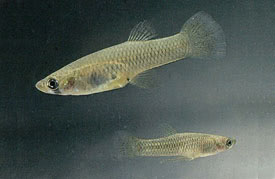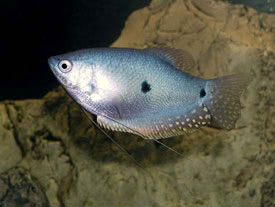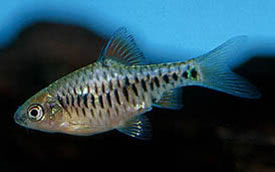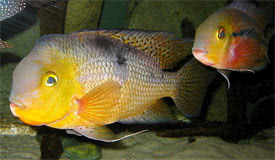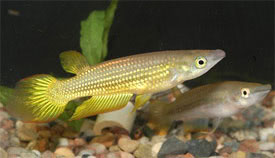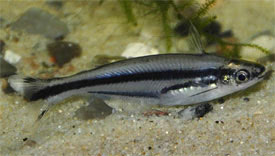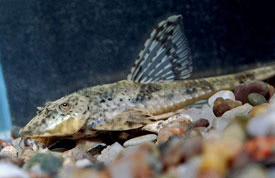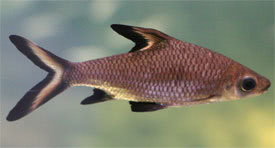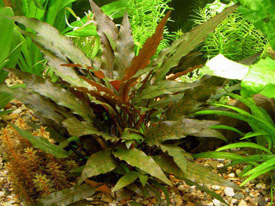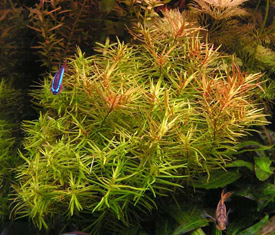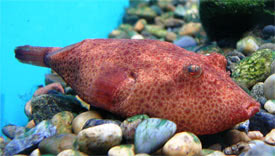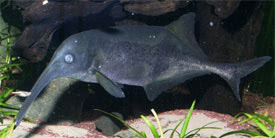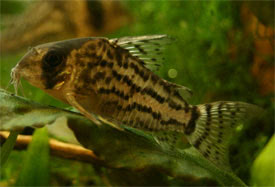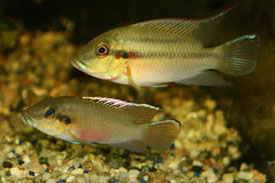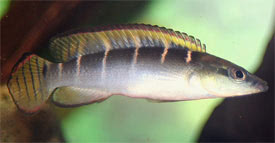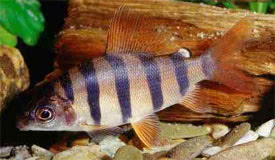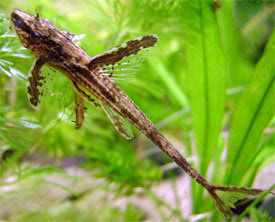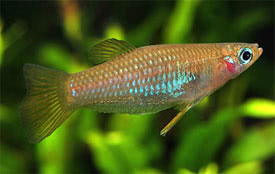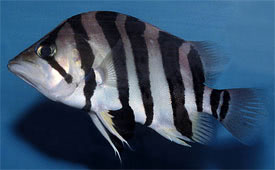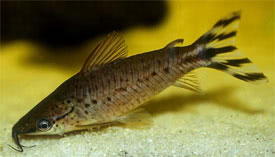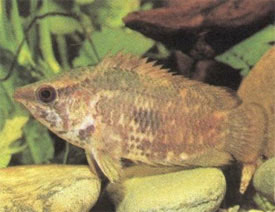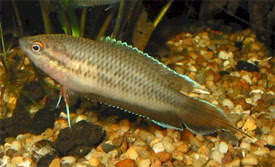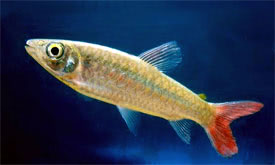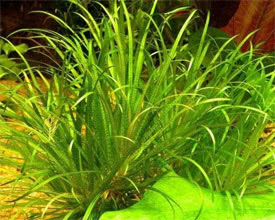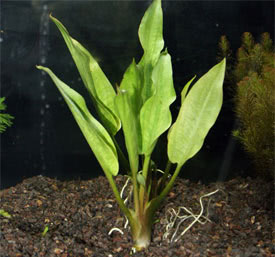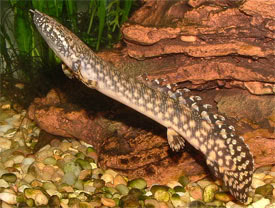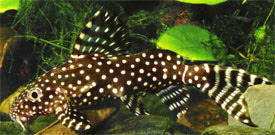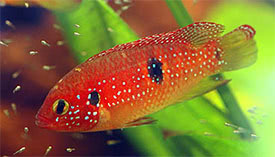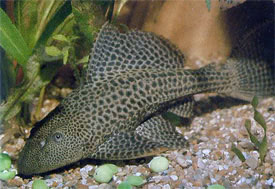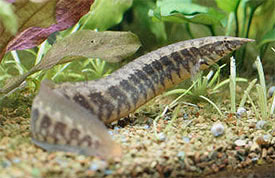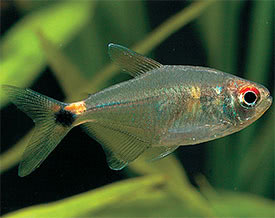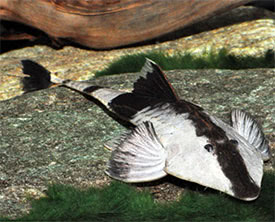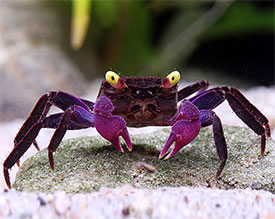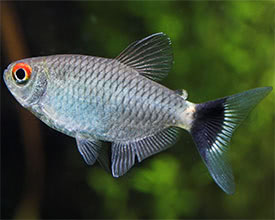
 Magyarul / Hungarian
Magyarul / Hungarian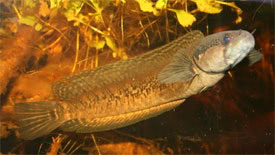
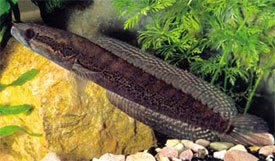
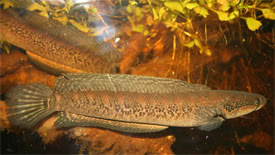

- Scientific name: Parachanna africana
- Synonyms: Channa africana, Ophiocephalus africanus, Parophiocephalus africanus
- Common name: African snakehead, Niger Snakehead
- Group: Other fishes
- Habitat: Africa; southern Benin, Nigeria, Cameroon
- Size: 32 cm
- Biotope: Found in coastal sections of rivers.
- Social behavior: Predatory fish, and should not be kept with smaller fish that can fit in it’s mouth. It is best kept in a single species set-up, or with similarly sized predatory fish or robust catfish in a large community tank.
- Diet: Carnivorous; Prawns, earthworms and mussel are readily accepted. Do not give them too much red meat, such as beef heart as these foods can interfere withe the fish’s digestive tract.
- Breeding: Rare in aquarium
- Tank: Minimum 250 litres
- Population: 1 fish for 300 litres
- Decoration: The decoration is less important as long as it offers a lot of areas to swim on. Floating plants are recommended as they diffuse the light, and the fish usually become more active.
- Temperature: 22-27 °C
- pH: 6-7,5
- Hardness: 5-20 NK°
- Lifespan: 8-12 years
Description: Parachanna africana is one of the few snakehead species occuring naturally outside Asia. The head is slightly depressed anteriorly and covered with large scales. Lower jaw is slightly longer than upper jaw with 3 to 4 large canine teeth. The color of the fish varies considerably according to the fish’s mood. The upper half of the body has a light brown to clay grey background coloration with shades of yellow. A series of brown-black spots can be seen on the flanks, which appear to give an overall pattern of 8-10 chevrons facing the head. A broad blackish band runs from the eye to the gill cover, and another dark bar connects the eye to the rear corner of the jaw. The fins are greenish-grey and spotted with tones of blue and green. Young fish are more yellow in color, with a broad lateral band extending to the lateral line. African snakehead can tolerate low oxygen conditions in water because they are air breathers from an early age.
Sexual differences are unknown, and there are only a few information about breeding. Breeding is sporadically successful in larger aquarium (at least 150 litres) with dense floating plant cover. During courtship display both males and females turn almost completely black, and a vivid gold band appears on the side of the head and the gill covers. All the fins turn black and the lips become blue. Pairing occur close to the water surface and end with the male turning the female belly up, where the female release the eggs. The eggs are lighter than water and float at the surface, but are light sensitive, and this is why the floating plant cover is important. The male guards the eggs and larvae. After the young are free-swimming, the parents should be removed.





